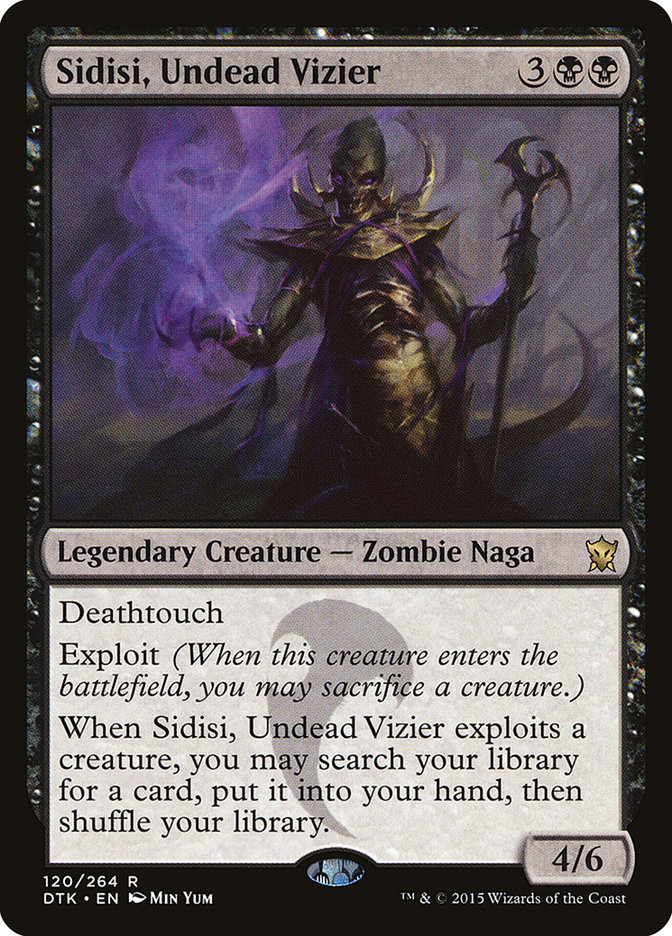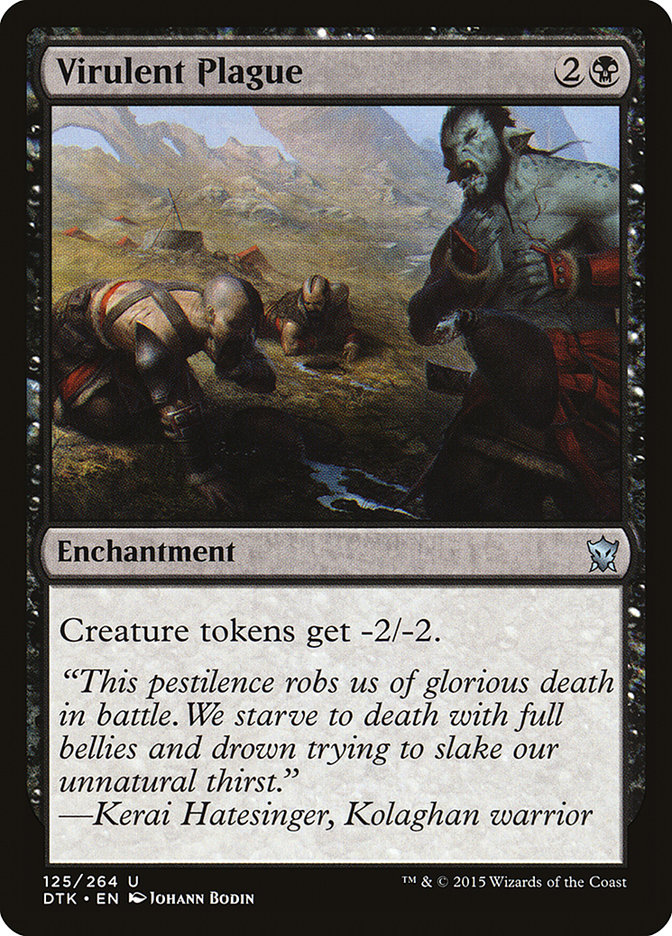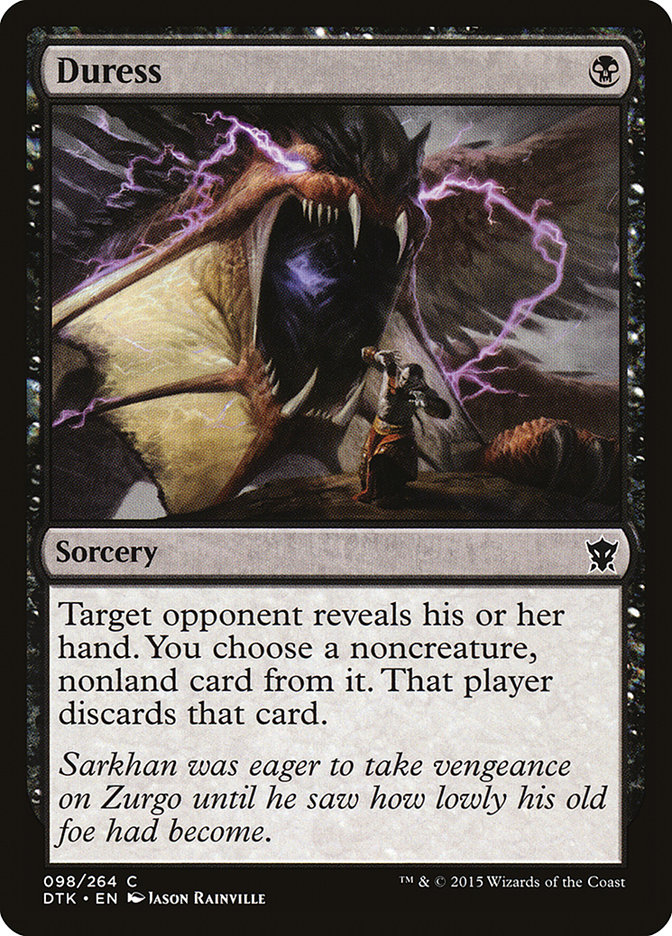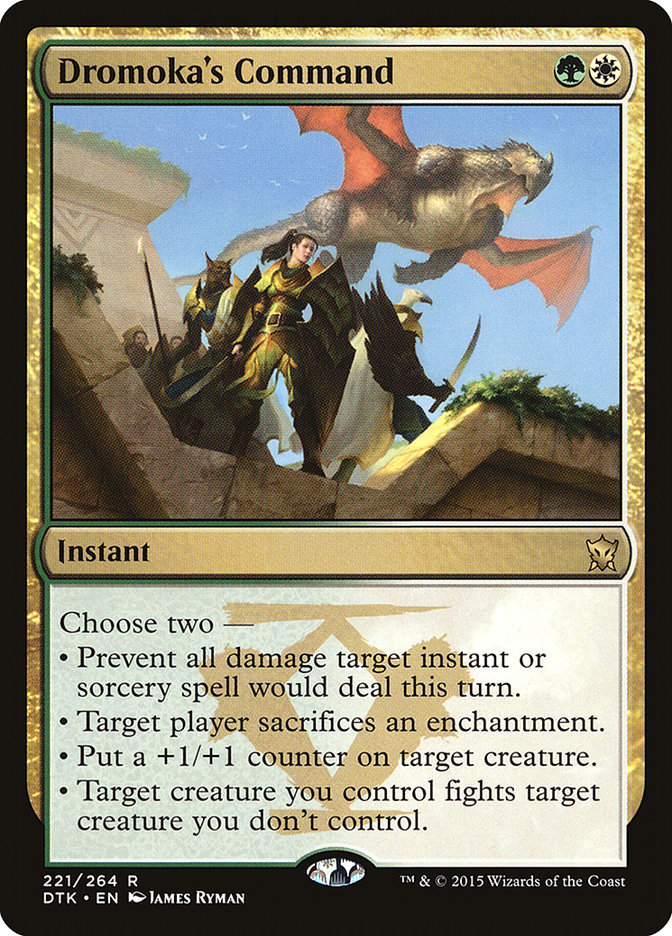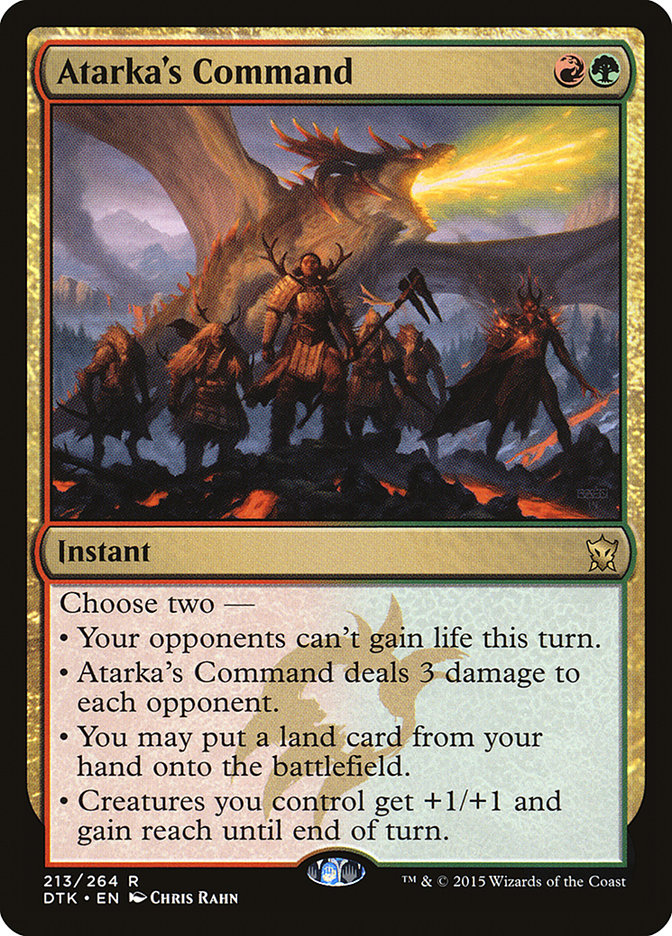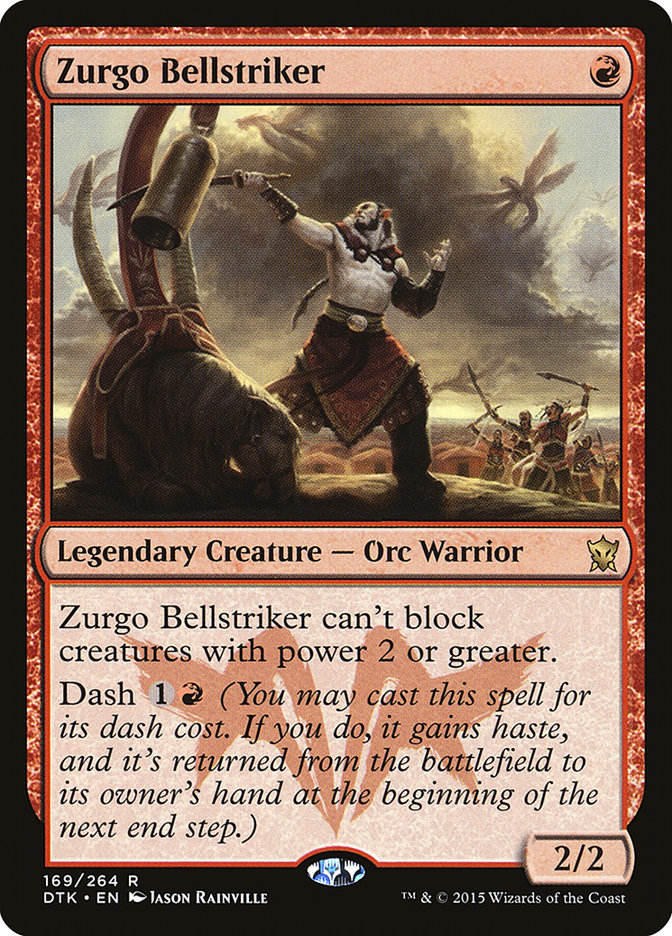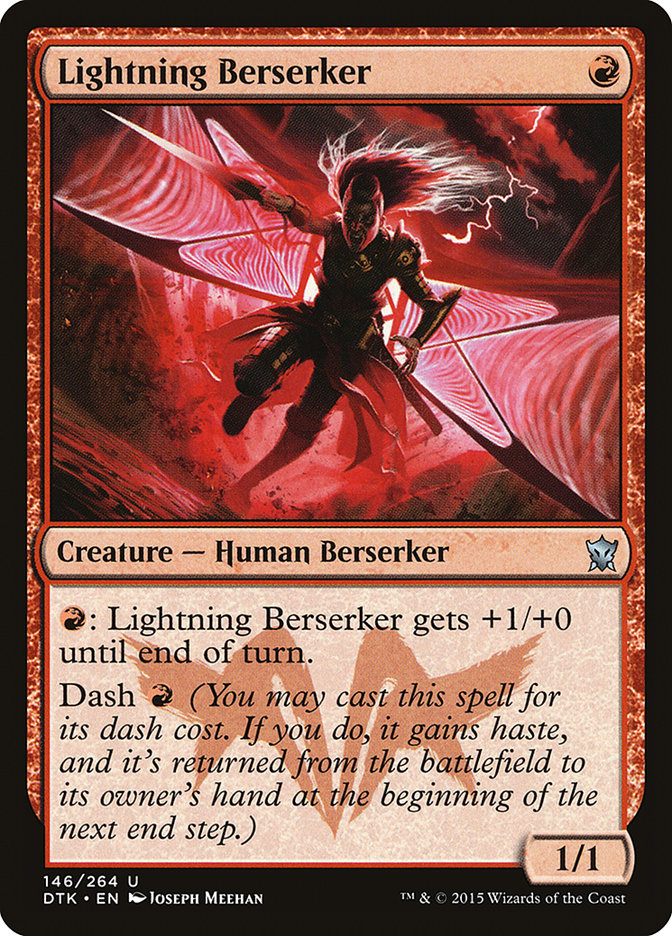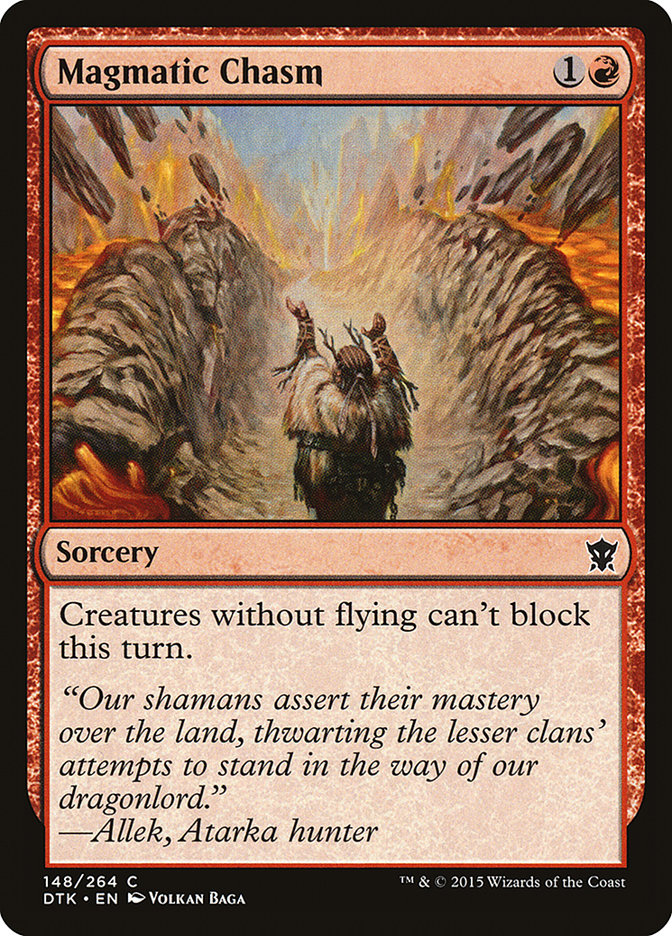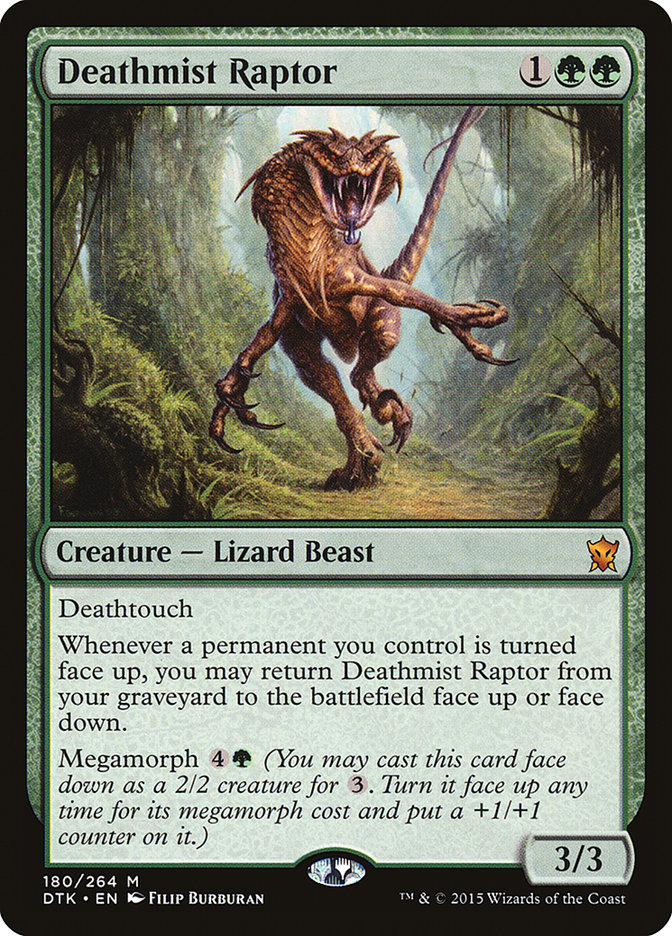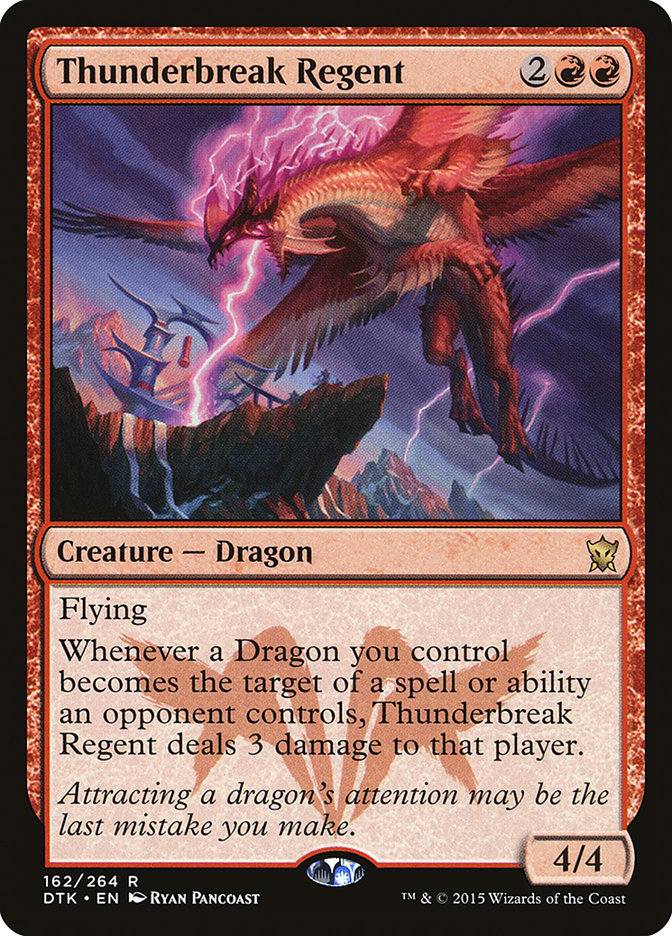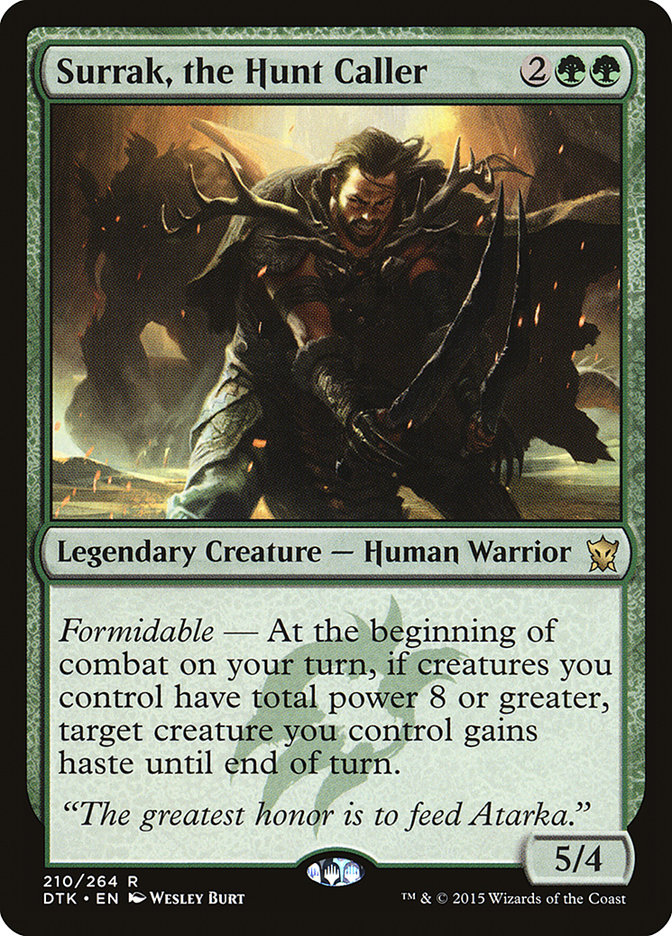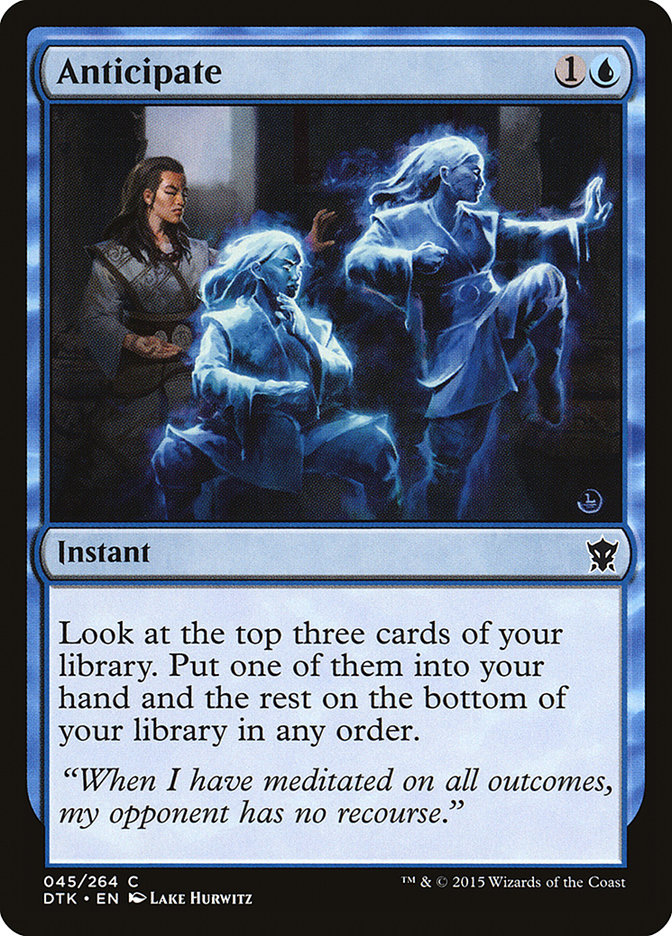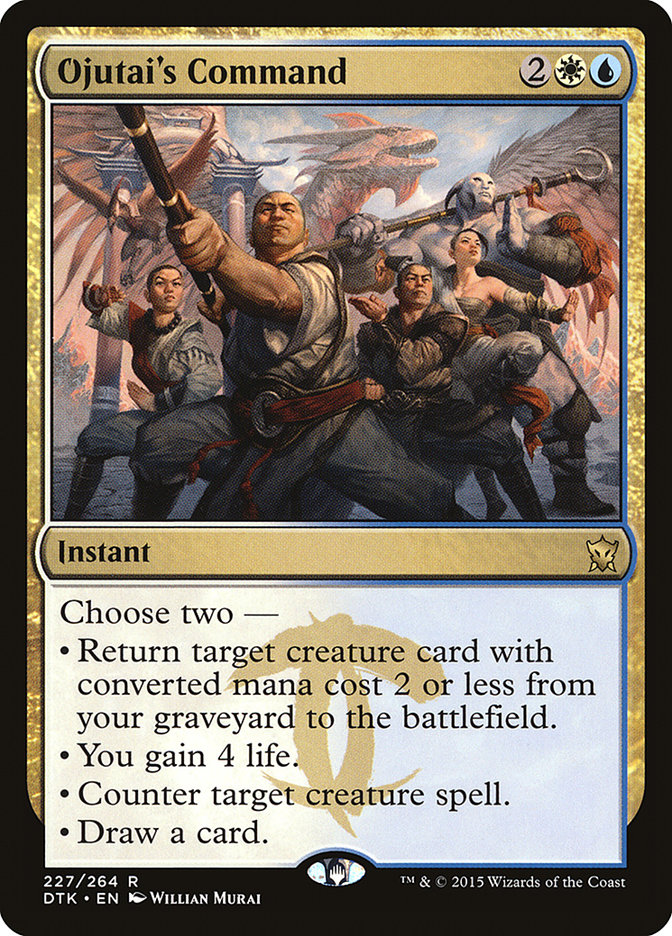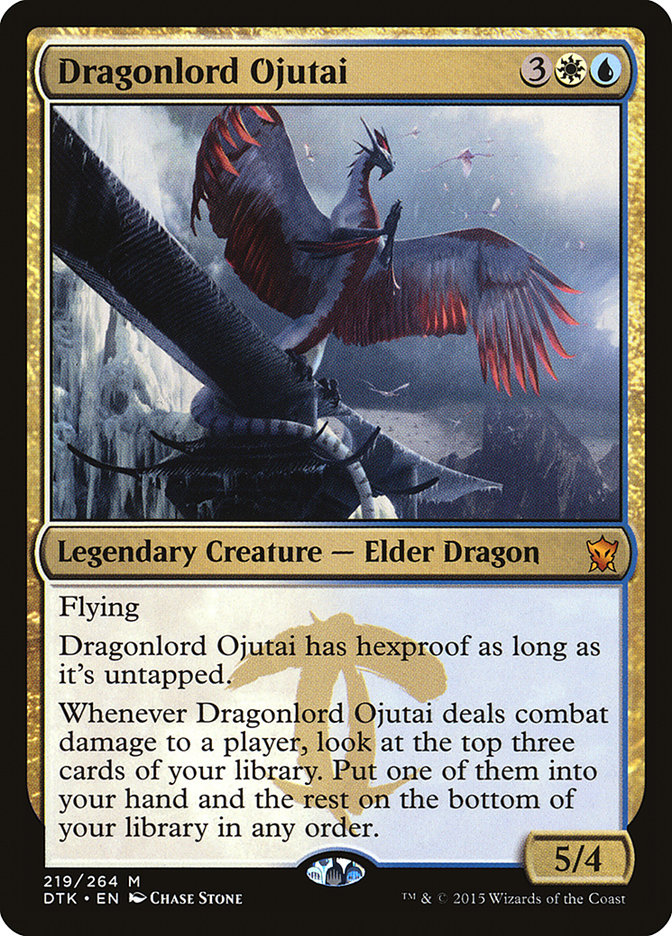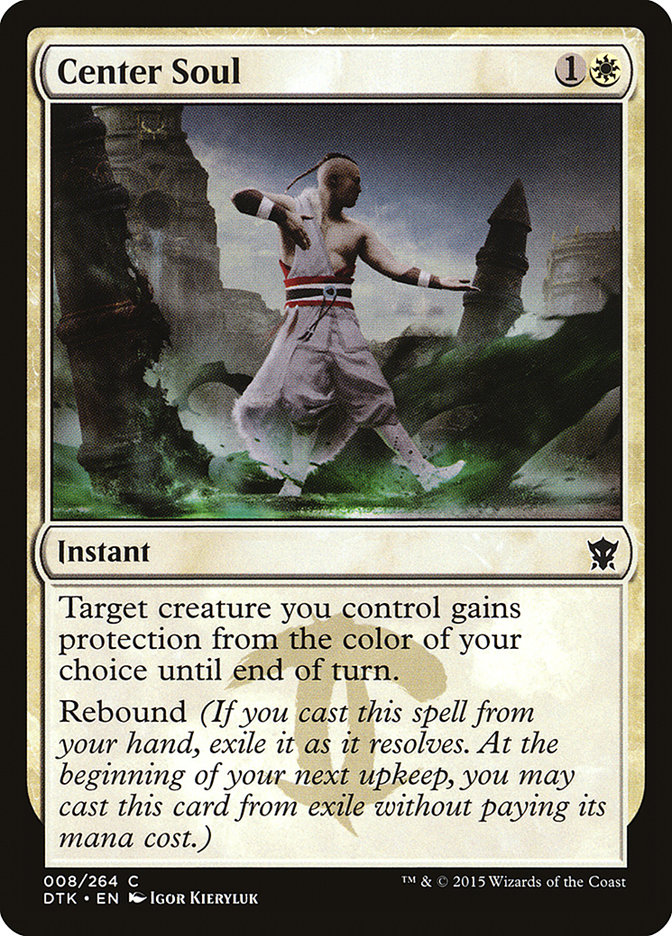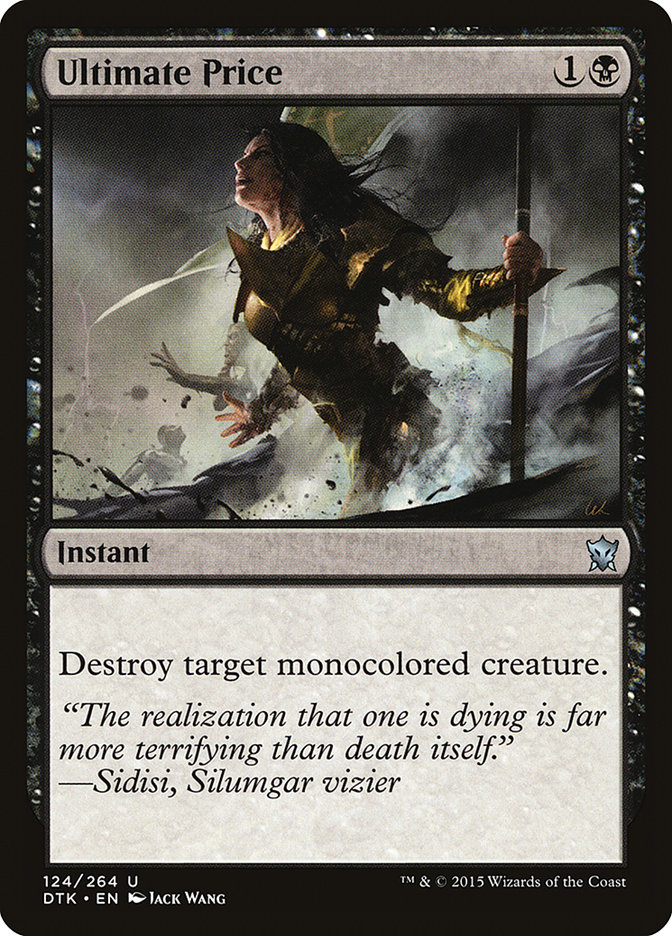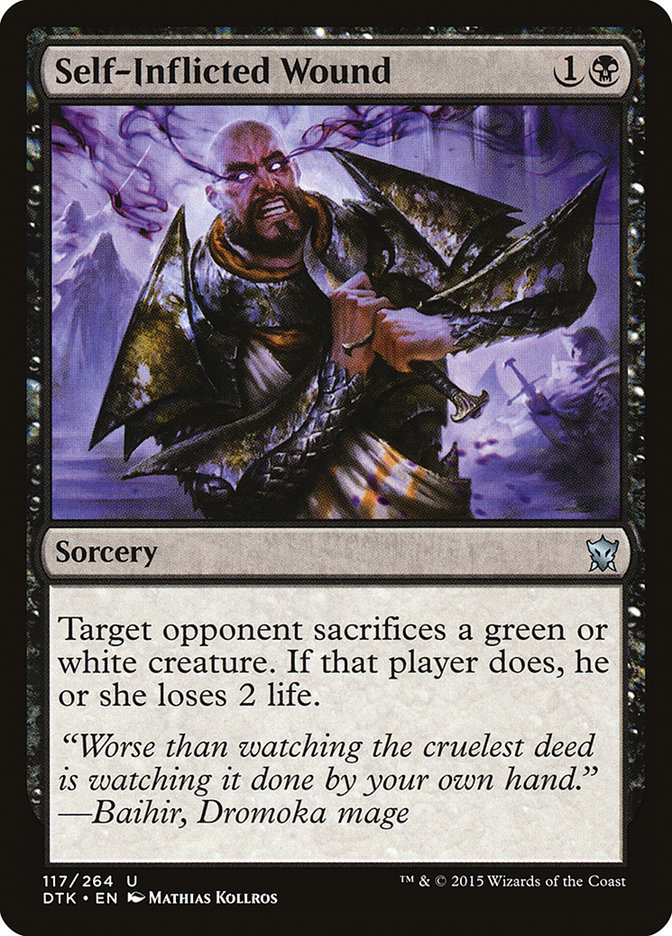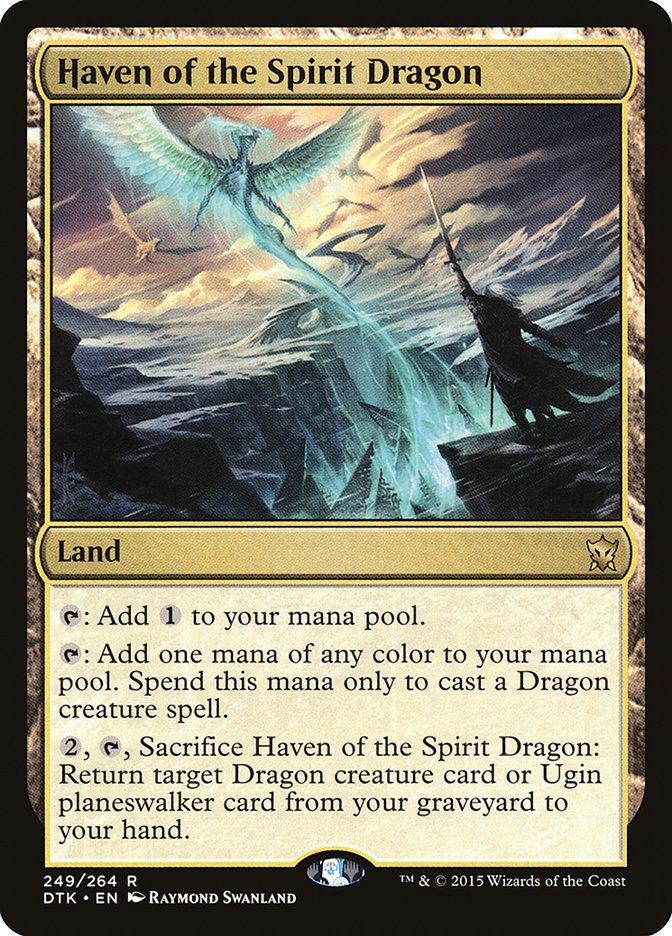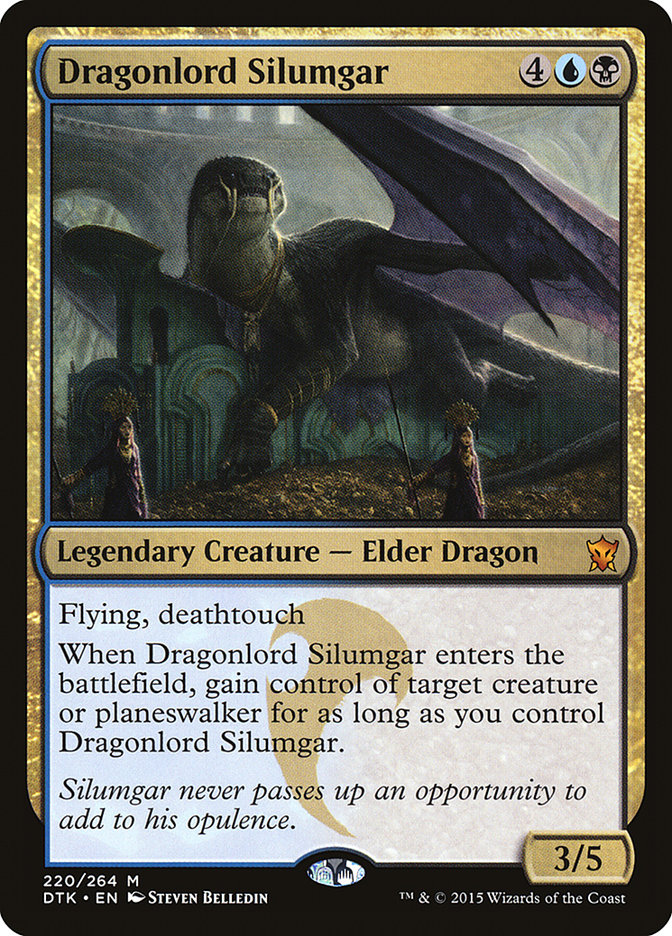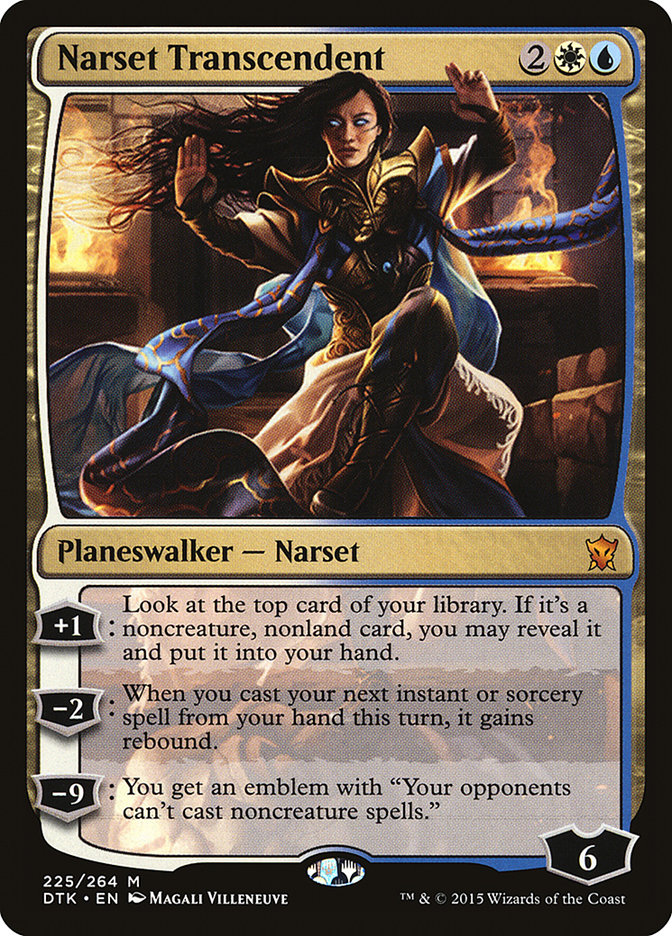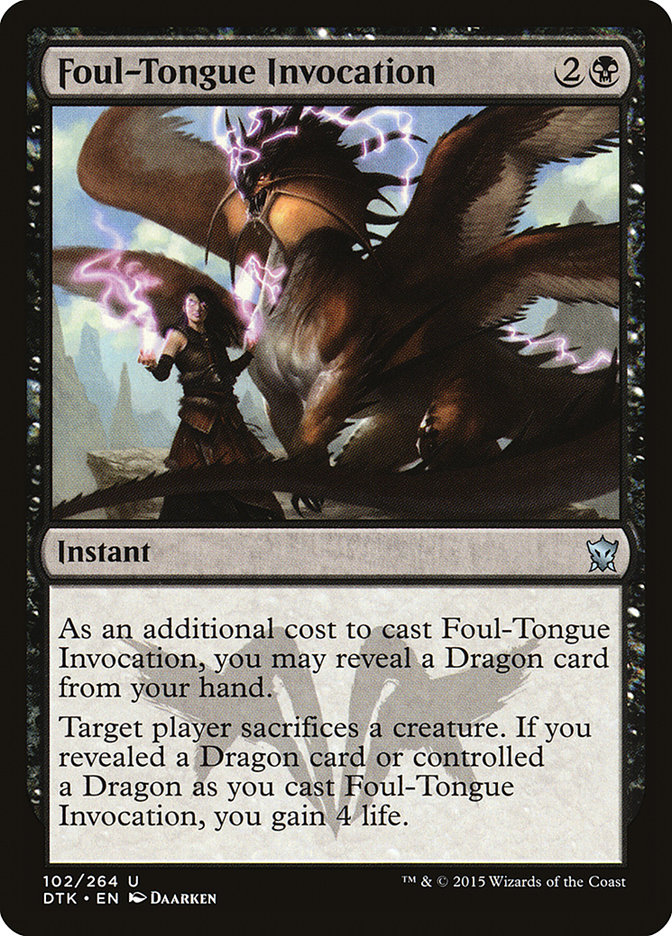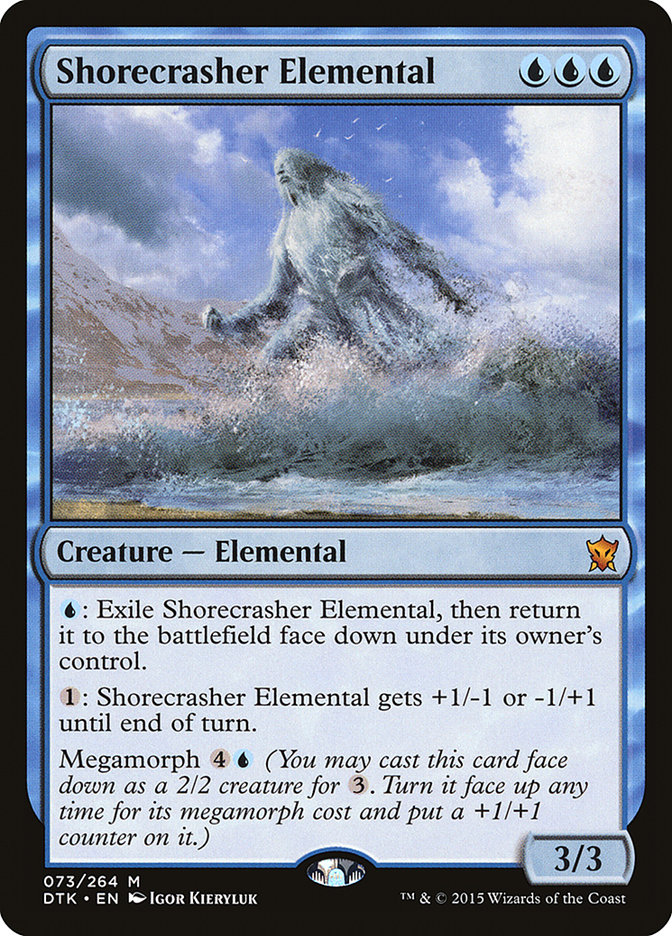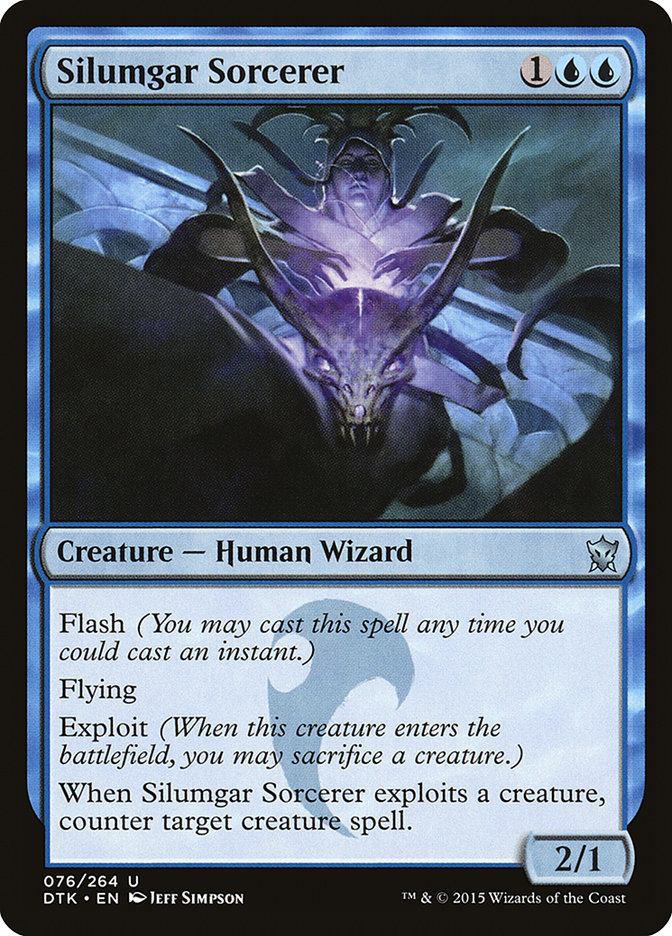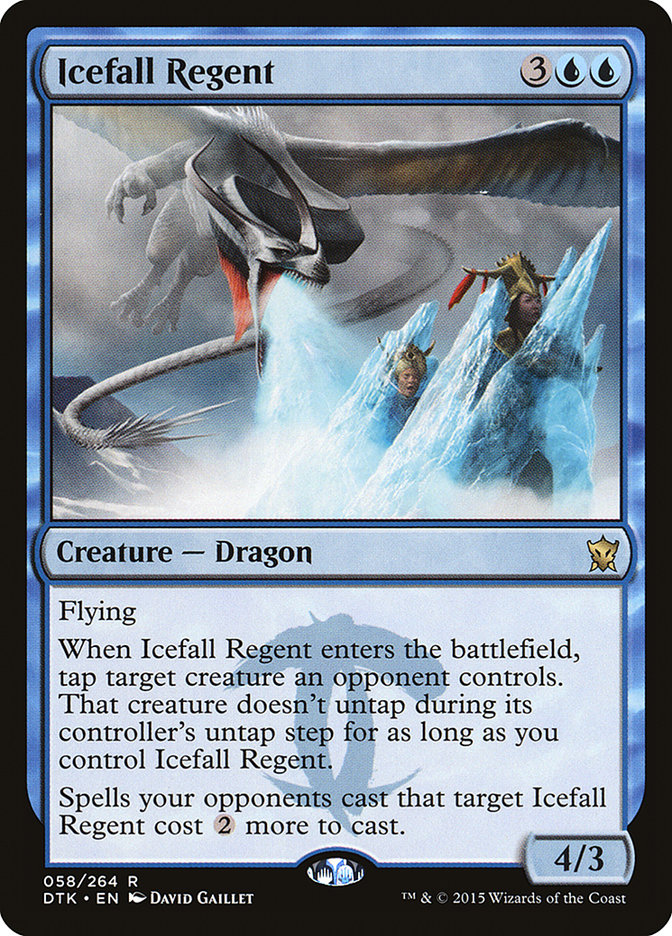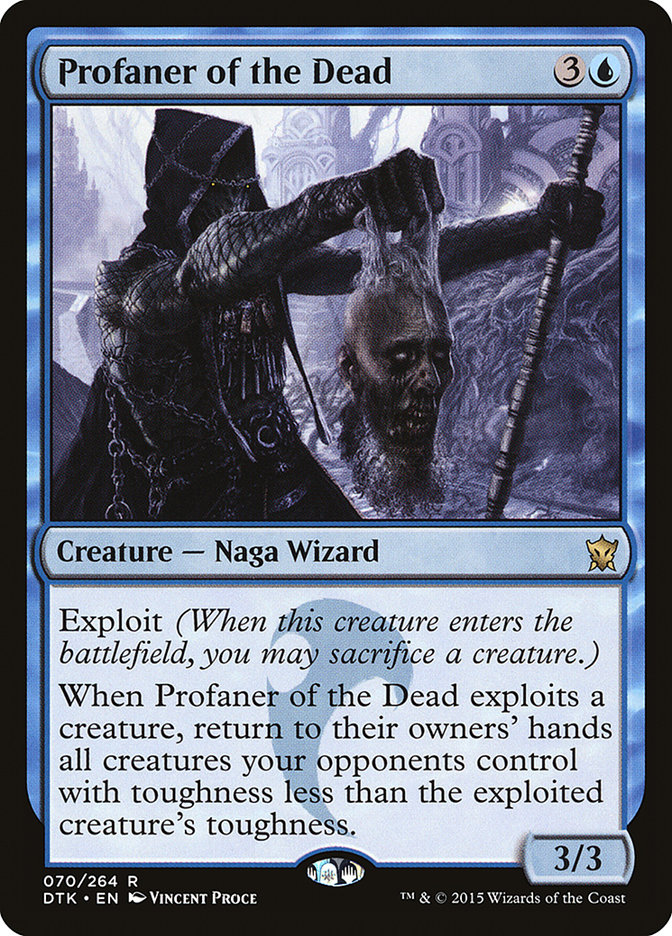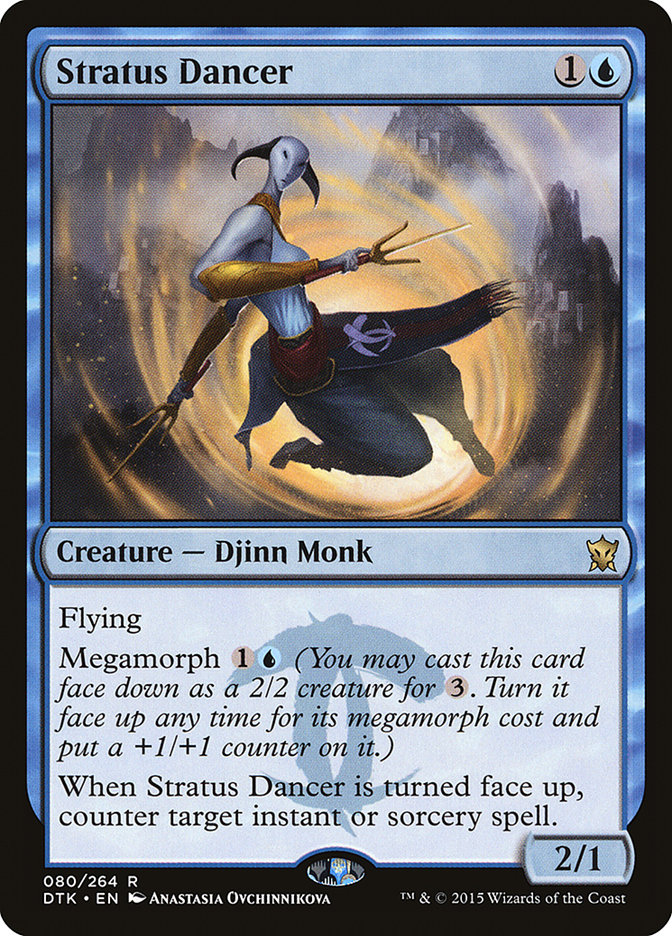Dragons of Tarkir has been one of the most universally praised sets in recent memory, with an almost shocking number of cards worth considering for
Constructed play. This past weekend’s Season One Invitational in Richmond and its accompanying Standard Open were the world’s first major tournaments with
the new set, and set the pace for the metagame to come.
Let’s take a look at the decks that did well this weekend, the impact the new cards are having, and what opportunities there are moving forward. This chart
combines a metagame breakdown for all of the decks that top 8’ed the event or went at least 7-1 in the Standard portion of the Invitational with the top 64
metagame of the Standard Open of the same week. These percentages are not weighted by finish, and the expected metagame column is the average of the other
two columns.
*G/x Devotion is most commonly G/W, but it also includes a few G/R Devotion and a Mono-Green Devotion.
**U/B Control includes 4 U/B Control decks and 1 Esper Control deck.
***Jeskai Heroic also includes a U/W Heroic deck
****Misc = Mono-Blue Devotion, Naya Midrange, and G/W Aggro
That’s a pretty diverse field, but so far, it seems that Abzan, in all of its flavors, is the deck to beat on day 1. Let’s start with the Abzan list
piloted by Season One Invitational Champion and the newest member of The Pantheon Jacob Wilson.
Creatures (16)
Planeswalkers (3)
Lands (24)
Spells (17)
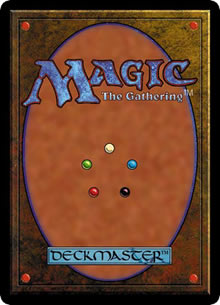
The primary evolution here is the move towards Sidisi, Undead Vizier as a major board presence that finds exactly what you need to take over the game.
We discussed Sidisi quite a bit over the past few weeks, so suffice to say, she’s as good as advertised. She is quite strong but does require some
deckbuilding considerations, most loudly the addition of Satyr Wayfinder, which in turn makes Tasigur, the Golden Fang more attractive.
Obviously, it’s nice to just sacrifice an Elspeth token, but it’s often going to be worth it to sacrifice an extra Courser, or a Rhino, or even Sidisi
herself. Getting the best card in your deck for a given boardstate is a huge advantage. The ability to Demonic Tutor encourages us to play a little bit of
a toolbox, a small selection of singletons that we might find with Sidisi under the right circumstances.
When we need to make two big plays in the same turn, we can find the Murderous Cut when we cast Sidisi on turn 6. Other times, we might not have the cards
in our graveyard, so Ultimate Price might be a better target. If there’s a problematic enchantment or artifact we need to get rid of, like Outpost Siege or
an Obelisk of Urd, we can find Utter End. If we just want to take over the game, we can go find Garruk, Apex Predator (or Elspeth, if we only have six
mana).
The tutor ability actually gives us a lot of extra mileage out of our sideboard cards. Virulent Plague, Back to Nature, End Hostilities, Nissa Worldwaker,
and Ugin, the Spirit Dragon can all be excellent targets, depending on the board.
One of the premier sideboard cards in the format, this is probably the best reason to play a more balanced build of Jeskai Tokens with cards like Soulfire
Grand Master and Goblin Rabblemaster rather than just playing all token-making spells.
Speaking of premier sideboard cards of the format, Duress is absolutely fantastic, particularly when partnered with card draw like Read the Bones and Abzan
Charm. The printing of Duress is going to have a major impact on the format, making black decks able to improve their control matchup as much as they are
willing to spend sideboard slots on. I’m guessing this is going to lead to blue decks sideboarding more cards like Treasure Cruise to have redundant card
drawing, to try to fight through the Duresses.
Now, I personally love Sidisi in Abzan, but she isn’t vital. For instance, take a look at this list by Joe Bass:
Creatures (10)
Planeswalkers (4)
Lands (26)
Spells (20)

Compared to Jacob’s list, Joe has two Read the Bones and two land instead of the four Satyr Wayfinders, a Bile Blight instead of an Ultimate Price, and an
Elspeth, an Ugin, and two End Hostilities instead of two Sidisis, the Garruk, and a Hero’s Downfall. While Joe’s list is very much just a “last season’s
Abzan” list, he still makes room for two Duress in the sideboard.
While Abzan Control was the better performing deck at the Invitational, Abzan Aggro was the more popular style in the Open. The primary new addition?
Dromoka’s Command is a much, much better Abzan Advantage. It’s not hard to get a card and some value out of it, but sometimes you can just
straight up two-for-one your opponent.
Creatures (20)
- 4 Fleecemane Lion
- 3 Anafenza, the Foremost
- 2 Wingmate Roc
- 4 Rakshasa Deathdealer
- 4 Siege Rhino
- 1 Whisperwood Elemental
- 2 Tasigur, the Golden Fang
Planeswalkers (2)
Lands (25)
Spells (13)

Coleman’s list features two+one Dromoka’s Command, but it’s also got a little spice in the form of a minor Whisperwood Elemental + Mastery of the Unseen
package. This gives it some tools for grinding out attrition-based opponents that it wouldn’t normally be as well-suited to fight.
After Abzan, the next most popular strategy was Mono-Red Aggro (or Mono-Red with Atarka’s Command). This is a style that has received a lot of press as a
result of some appealing new cards, and sure enough, it seems to be living up to the hype.
While Skullcrack is an important mode of this card, it’s actually the +1/+1 ability that really makes the card (often also dealing three to the face).
Playing it in a Hordeling Outburst deck means it is often going to be worth six to eight damage. An opening hand of Dragon Fodder, Hordeling Outburst, and
two Atarka’s Command is over twenty damage by turn 4!
Check out more of the most successful lists here.
Creatures (17)
- 4 Foundry Street Denizen
- 2 Goblin Rabblemaster
- 4 Monastery Swiftspear
- 3 Goblin Heelcutter
- 1 Lightning Berserker
- 3 Zurgo Bellstriker
Lands (20)
Spells (24)
Sideboard

Red gained a number of key cards with Dragons of Tarkir besides Atarka’s Command.
Atarka’s Command makes us want to play token-makers like Dragon Fodder and Hordeling Outburst, which in turn makes us want to play one-drops like Foundry
Street Denizen and Monastery Swiftspear. Perhaps what I find most interesting about this list is the complete absence of Firedrinker Satyr.
Zurgo Bellstriker is an easy addition to red aggro decks that are hungry for any two-power one-drop. Lightning Berserker is a little less obvious, but it
can hit hard for a one-drop going long. Still, I am surprised to see no Firedrinker here.
Roast is a paradigm-changing card. Suddenly red decks have a versatile and efficient answer to Siege Rhino! I expect this to be a staple of red aggro decks
for quite some time.
Magmatic Chasm helps get through the final points of damage against opponents that are able to develop a serious defense. I would guess that most people
dismissed this card out of hand, but I don’t think this is the last we’ve seen of it.
While Atarka’s Command is super sweet, most red mages did not want to put such a strain on their manabase, leading to red decks like this:
Creatures (20)
- 4 Foundry Street Denizen
- 4 Eidolon of the Great Revel
- 1 Goblin Rabblemaster
- 3 Goblin Heelcutter
- 4 Lightning Berserker
- 4 Zurgo Bellstriker
Lands (21)
- 21 Mountain
Spells (19)
Sideboard

This is effectively the same deck but with more Lightning Berserkers instead of Atarka’s Commands, which makes the mana a bit easier. By the way, pay
attention to the number of Goblin Rabblemasters in these lists. The Rabblemaster is a great card, but the format is pretty hostile for it these days.
If Abzan and Red Aggro are two of the pillars of Standard, Green Devotion is surely the third. While Green Devotion with red for Crater’s Claws and the
like is not uncommon, the most popular style is still G/W devotion with Mastery of the Unseen. The printing of Deathmist Raptor is only going to increase
this.
Deathmist Raptor is a brutal new addition, giving us a powerful threat that is resilient to removal, helping us combat attrition-based matchups. A 3/3
deathtouch for three is not all that bad, and it’s often going to matchup well, like against Siege Rhino or Courser of Kruphix. Once it dies, you can use
Mastery of the Unseen or Whisperwood Elemental to bring it back. Even just drawing a second copy of the Raptor can get the engine going.
Creatures (30)
- 4 Elvish Mystic
- 3 Polukranos, World Eater
- 4 Sylvan Caryatid
- 3 Voyaging Satyr
- 4 Courser of Kruphix
- 3 Genesis Hydra
- 4 Whisperwood Elemental
- 1 Temur Sabertooth
- 4 Deathmist Raptor
Lands (24)
Spells (6)

While this list has a fair number of ways to trigger the Raptor, I think I’d like to play some number of Rattleclaw Mystics for even more triggers. It’s
hard to cut too much white mana, but we can probably trim some amount of Voyaging Satyr/Sylvan Caryatid, particularly if we can get a Blossoming Sands or
two in here, maybe even a second Mana Confluence.
Dromoka’s Command is just a generally great card in G/W decks, but it’s particularly powerful when used in conjunction with Hornet Nest. This list doesn’t
feature any Hunt the Hunters, but that’s another great way to arrange fights with your Hornet Nest if you are in the market.
Surge of Righteousness is sort of the white Pharika’s Cure, but its ability to hit larger creatures is significant. While it doesn’t kill Stormbreath
Dragon or Sarkhan, the Dragonspeaker, it does kill Mantis Rider, Siege Rhino, Butcher of the Horde, and more. Even if it’s just killing a Monastery Swiftspear and gaining two life, that’s a big help against the fast red decks.
Another red aggro deck that has sort of burst onto the scene is that of G/R Aggro. Relatives of this deck have existed for a while, but the printing of
Dragons of Tarkir and with it, powerful new four-drops, has really changed the texture of G/R’s gameplan.
Creatures (30)
- 4 Elvish Mystic
- 4 Stormbreath Dragon
- 4 Boon Satyr
- 4 Goblin Rabblemaster
- 4 Rattleclaw Mystic
- 3 Heir of the Wilds
- 4 Thunderbreak Regent
- 3 Surrak, the Hunt Caller
Lands (23)
Spells (7)
Sideboard

While G/R was never really short on four-drops, these two new ones are absolute monsters!
Thunderbreak Regent is similar to Ashcloud Phoenix, primarily functioning as a four-power flier that punishes opponents that use removal on it. While the
Thunderbreak Regent only requires one removal spell, compared to the Phoenix’s two, it does have three advantages:
● It’s a 4/4 instead of a 4/1. This makes it a legitimately good blocker in some situations.
● Its three damage ability can sometimes be even better than Ashcloud Phoenix’s death trigger, particularly against opponents that have drawn a lot of
cards but that might be low on life. Remember, the ability helps all of your Dragons, so your opponent is often going to have to hit the Regent when they’d
really like to hit your Stormbreath. Heaven forbid you stick a second Thunderbreak Regent!
● It’s a Dragon, which opens up Draconic Roar. With eight Dragons, we have 71% chance of dragon-kickering the Roar for an extra three damage on top of the
Lightning Strike. Ideally we will be spending the early turns advancing our board, and if we can wait to Draconic Roar on turn 5, we’re up to 82.4%. Even
when it fails to deal the three extra damage, it’s typically still going to be at least the same as Lightning Strike, dealing three to a creature. The only
place we’re losing out is when we want to go straight to the face and don’t have a Dragon.
It’s tempting to try Scaleguard Sentinel in here, as a 3/4 for two is very much something we’d be interested in. The thing is, having only eight Dragons
hurts more on the Sentinel since we are typically going to want to play it turn 2, not wait. Additionally, being stuck with a 2/3 when we’re on the backup
plan is less useful than dealing three damage to a creature. Finally, Scaleguard Sentinel costs GG, which isn’t hard, but it isn’t trivial either. We’d
probably want to add at least two more dual lands whether they’re Rugged Highlands or Mana Confluence.
Now, if we had ten dragons…
Surrak, the Hunt Caller hits for five, but that’s not all that crazy for a four-drop on the ground. The reason he’s so good is that it is relatively easy
to assemble three more power to get up to eight, which makes him a 5/4 haste creature that can then give your future creatures haste. The only reason the
card is not breaking the back of the format is its four toughness rather than the fifth point that Polukranos has. This means Surrak dies to Stoke the
Flames and trades with Siege Rhino rather than trumping it.
While we’re only just now getting down to a Jeskai deck, the color combination is actually quite popular. The aggro builds and the token builds have a lot
of cards in common, and when added together, make Jeskai the second most popular strategy.
Creatures (14)
Planeswalkers (3)
Lands (25)
Spells (18)

While Jeskai Aggro didn’t get any one card that is revolutionizing the archetype, they are benefitting from the popularity of Green Devotion decks, which
typically are poor at killing creatures. This breed of Jeskai is all about must-kill threats, so it is generally at an advantage against opponents with
little to no removal.
While Anticipate is a more natural fit in control, Jeskai Aggro makes reasonable use of it too. It triggers Seeker of the Way, helps cast Dig Through Time,
and can be rebought with Soulfire Grand Master. It also helps us play a passable control game against some opponents, particularly after sideboarding,
where it helps us find our sideboard cards more often.
While Kevin Jones played just a single Anticipate, some other Jeskai players like Todd Anderson played multiples; though the number of great two-drops
available to us means we certainly don’t need the full playset. Besides, Jeskai leaves up mana for permission a lot less often than control, which
is where Anticipate is at its best. I am interested in Anticipate in Jeskai, but I think it is totally reasonable to cut them if we end up with enough
two-mana plays we’re satisfied with.
While I am only lukewarm on Ojutai’s Command in control, I am a bigger fan when we actually have two-drops to bring back. In this case, we can surprise
opponents by end step Ojutai’s Commanding back a Soulfire Grand Master on turn 5 (while also gaining some life, some tempo, or a card), and then untap and
Dig Through Time with the Soulfire Grand Master’s ability effectively copying it!
For reference, let’s take a look at a Jeskai Tokens list to compare:
Creatures (7)
Lands (24)
Spells (29)

This approach replaces Soulfire Grand Master with Raise the Alarm, and Mantis Rider with Hordeling Outburst, which in turn lets us use Jeskai Ascendancy
instead of the planeswalkers. Anticipate is much stronger in Jeskai Ascendancy decks, as it gives us a surprise trigger in combat that typically finds
another card that can trigger Ascendancy again.
Dragonlord Ojutai is a great finisher that is totally maindeckable, but I actually love when decks can afford to bring it in out of the sideboard. Post
sideboard games are so much slower and grindier, and Dragonlord Ojutai is perfect for fighting that kind of a fight. It’s also nice to be able to protect
it, and after sideboard, we can afford to have a bunch of Negate, Disdainful Stroke, and Valorous Stance-type cards. That said, the interaction with Jeskai
Ascendancy is so strong, I think I’d actually rather maindeck it here. The Dragonlord has hexproof as long as it’s untapped, so Jeskai Ascendancy means
every instant is functionally a Counterspell.
There’s actually one more Jeskai variant that has gained some steam in recent weeks, though it is so different than the previous two I would not consider
them in the same class. This new Jeskai deck is basically just W/U Heroic, splashing red for Temur Battle Rage.
It’s not uncommon for the Heroic deck to build a six-power threat, and Temur Battle Rage not only doubles the damage it would deal (often giving it a +1/+1
counter for Heroic that is also doubled), it also gives the creature trample, which can help finish the job against opponents’ chump-blocking.
Creatures (16)
Lands (21)
Spells (23)

Lossett’s victory in the Richmond Standard Open was aided by a new addition from Dragons of Tarkir that has largely flown under the radar:
Center Soul is yet another trick for saving your creature from a removal spell or getting in past blockers. I am not in love with the card, as we have such
good options for two mana; however, it does have the nice feature of triggering heroic twice. Besides, making your big threat unblockable twice is often
going to add up to twenty, and Seeker of the Way + Center Soul can be hard to race when the Seeker is also buffed by an Ordeal.
While control is not dominating the top tables, it has put up some respectable finishes, primarily in the form of U/B Control:
While Anticipate is the primary new addition, we’ve also gained some nice options for two-mana removal.
Ultimate Price is a great answer to creatures like Goblin Rabblemaster and Courser of Kruphix, giving you some much needed tempo. That it is effective
early against one-drops like Zurgo Bellstriker while also being useful lategame against bigger decks that use threats like Stormbreath Dragon is an
important addition to Bile Blight.
Self-Inflicted Wound is more impressive in an aggressive deck that appreciates the life loss and might want to get a Sylvan Caryatid out of the way, but
it’s still a quality removal spell against the right enemies. That it kills a monstrous Fleecemane Lion is particularly important.
It’s hard to play too many colorless lands, but if you can afford it, Haven of the Spirit Dragon gives you one more threat going long without costing a
spell slot in our deck, getting back either Silumgar, the Drifting Death or Ugin, the Spirit Dragon. After sideboarding, it can also get back Dragonlord
Silumgar.
Dragonlord Silumgar is an awesome sideboard card, giving us a new dimension of attack and punishing opponents with less removal. He’s also a powerful
tactical weapon against planeswalkers, which he can steal the turn before they ultimate. Dragonlord Silumgar has such a powerful impact on the game, I’m
not convinced we can’t maindeck some, particularly if we support it with Thoughtseize, Duress, or Silumgar’s Scorn.
While the most popular control deck was U/B Control, James Buckingham went 7-1 in Standard with the following Esper list:
Creatures (4)
Planeswalkers (2)
Lands (26)
Spells (28)

While we don’t have Jeskai Ascendancy for the mondo-combo, a full playset of Silumgar’s Scorns and Dissolves, along with Duress and Negate out of the
sideboard, means we actually have a fair number of ways to protect it. While the shields are “down” before we get our free Anticipate, we do get to untap
before it comes to that. This means we can tap out to play Dragonlord Ojutai and then have all of our mana back when we actually make our move. Typically,
if you hit someone with Dragonlord Ojutai and then untap, you are going to snowball pretty hard, as your advantage is going to build rapidly.
Narset is a fine card drawer in decks full of non-creature spells that can actually realistically protect her. When we miss and there’s a land on top of
our deck we don’t want, we can Anticipate or crack a fetchland to effectively “reset” the top of our library.
While we’re only 49% to have a Dragon in hand by turn 3 (not counting Anticipate), it’s not the end of the world to have to pay three for an Edict. The
times we hit, however, we gain four much needed life. Esper doesn’t get to play very many lifegain lands compared to U/B Control or U/W Control, so we very
much need something to help offset burn like Stoke the Flames or Crater’s Claws.
To this effect, Ojutai’s Command is actually reasonable here despite not getting to bring back a two-drop very often. That said, getting back an Arashin
Cleric and gaining four life is a devastating play against a red aggro deck (assuming they don’t respond with Atarka’s Command).
Next, we come to Sultai Reanimator. While it was not a major player in terms of numbers this weekend, I suspect Reid Duke’s success with a well-crafted
build will increase the strategy’s popularity next week.
Creatures (26)
- 1 Hornet Queen
- 4 Sylvan Caryatid
- 4 Courser of Kruphix
- 4 Satyr Wayfinder
- 1 Soul of Innistrad
- 1 Reclamation Sage
- 4 Sidisi, Brood Tyrant
- 1 Silumgar, the Drifting Death
- 2 Tasigur, the Golden Fang
- 1 Torrent Elemental
- 1 Dragonlord Silumgar
- 2 Sidisi, Undead Vizier
Lands (23)
Spells (11)

This list has a lot of smart tweaks and two big new additions. Sidisi, Undead Vizier we discussed above, but it’s even better in Sultai. The ability to go
find your Whip of Erebos is huge since you can then Whip back whatever creature you sacrificed. Whipping back Sidisi is particularly powerful since she was
going to die anyway, so you’re cheating the system.
Sultai decks are often going to have more one-ofs anyway, which increases her versatility. It’s also nice to have both Satyr Wayfinders and Sylvan
Caryatids to sacrifice.
The other big addition is Dragonlord Silumgar (and in the maindeck!). Once you’ve got as many creatures as this deck has, you stop worrying so much about
what removal can take out your creature. Besides, Silumgar dodges Stoke the Flames, Lightning Strike, Wild Slash, Roast, Bile Blight, Ultimate Price, and
Elspeth’s minus ability. That is a pretty healthy chunk of the interaction people are counting on.
One last deck I’d like to take a look at today had only a single pilot, but it might be marking the beginning of a return to glory for Blue Devotion:
Creatures (24)
- 4 Ornithopter
- 2 Thassa, God of the Sea
- 4 Master of Waves
- 4 Frost Walker
- 4 Shorecrasher Elemental
- 4 Silumgar Sorcerer
- 2 Icefall Regent
Lands (24)
Spells (12)

This build of Blue Devotion abandons Bident of Thassa, as well as most of the one- and two-drops. Instead, it has Ornithopter/Darksteel Citadel/Ensoul
Artifact and a bit more permission than previous, as well as Anticipate to try to pull it all together.
This is the reason for Blue Devotion to return to the spotlight. It’s hard to kill, provides a ton of devotion, has good tribal synergy with the Master of
Waves, and is a versatile fighter on the battlefield because of its pump abilities.
Since you can exploit a creature to itself, Silumgar Sorcerer is effectively an Essence Scatter/FlyingFlashThreat split card. Besides, sometimes we’re just
going to have a dorky Ornithopter laying around that we’d love to upgrade into a 2/1 flier while also countering our opponent’s Siege Rhino. As a sweet
bonus, it can wake Thassa up at instant speed!
This new style of Blue Devotion has to go a bit bigger, and Icefall Regent fits into that gameplan nicely. That it can lock down a Siege Rhino while also
hitting for four in the air is nice, but what really excites me about the card is how awkward it can make things for our opponents. If they hold up three
for a Hero’s Downfall and you drop an Icefall Regent, they are going to not only waste this turn, they might not even get to cast the Hero’s Downfall on
their next turn if their land enters the battlefield tapped or they don’t have a fifth land at all.
Profaner of the Dead is a potent anti-token sideboard card, which Blue Devotion sorely needed. Even just sacrificing an Ornithopter will kill all opposing
tokens while leaving us with a 3/3 body to keep the beats going.
I love this card and kind of prefer to see it maindeck. That said, it is more effective out of the sideboard since our opponents will have more reactive
spells they sideboarded in, plus we’re only bringing it in when our opponents have a ton of non-creature spells.
Okay, I’m out for today. I gotta catch my flight to Belgium and meet the rest of The Pantheon in the castle we rented in the Belgium countryside. I love,
love, love brewing in new formats, and I can’t even remember the last time a set brought as much to
the table as Dragons of Tarkir.
What I’m wondering is, what is the single biggest sleeper in the set? What card or deck is flying under the radar but might break out in the next couple of
weeks?

